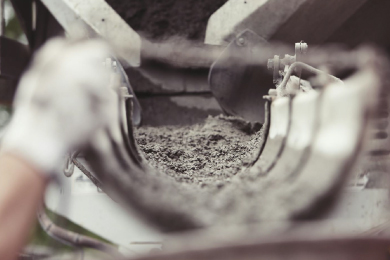Why now is the time for businesses to go greener
The race is on to rescue our planet from the risk of devastating changes in the future if we don’t reduce carbon emissions. To achieve this, the UK government has set a couple of important targets:
- Achieve net zero by 2050
- Cut emissions by 78% by 2035 compared to 1990 levels.
These are ambitious targets which will not be easy to achieve. All businesses and individuals have a part to play if we are to achieve these goals.
A company with green credentials is now far more appealing to both customers and young talent looking to work with companies who actively protect our planet. Plus, cost, which is one of the biggest barriers, is fast evaporating. Going greener has often had a cost implication which has held back many individuals and businesses from making changes. However, with energy prices skyrocketing over the past year, it is becoming too expensive for us not to reduce our energy use. Going greener is not only about looking after our climate but also about saving money. That’s why now is the perfect time for businesses to act. But what changes can a business make?
How a business can go greener
The government’s solution to achieving net zero is clear. Nationally, we need to move to using electric from the national grid, which will be supported by nuclear, solar, and wind. To reduce our reliance on gas,the government wants us to move to air source heat pumps. Even the best gas boilers will only achieve 98% efficiency whereas, in contrast, a modern air source heat pump provides 300-500% efficiency. In other words, for every 1kw of electrical energy it uses, it produces 3-5kw. This means an air source heat pump uses only 20-33% of the carbon used by a gas boiler.
Another increasingly popular option is installing solar PV panels on roofs. For any business with south or south-west facing roof space that is not shaded by trees or other buildings, this can be hugely beneficial.One drawback of this has been that it used to take roughly 15 years for a business to see a payback from the investment. However, with energy costs more than doubling over the last year, this has now dropped to below 10 years. With energy prices looking like they are only going one way, PV panels are now an attractive proposition.
These are not the only things a business can do and there are many factors that can change the amount of energy a business uses. In fact,there are about 15 different factors that we now consider when modelling a building, including adding insulation and changing windows.
However, businesses also need to be aware that electrification is not without its challenges for the future.
Potential problems for the greener future
Take electrical vehicles for example. New building regulations introduced at the end of 2021 make it clear that any new buildings or major refurbishments will require developers to install electrical charging points. The rate required is 1 charging point for every 10 parking spaces and this obviously comes with additional costs. However, there is a greater issue that needs to be considered.
Charging an electric car requires instantaneous energy. It’s not like a home where some lights might be on, whereas others are off. This places a greater demand on our national grid, and it can be hard for engineers to understand what the exact power demands are going to be for car charging. Current estimations are that another 145,000 charging points are going to be required.But is our grid up to the challenge of providing this demand? It’s likely that the network could quickly get overloaded. Most of our transformers will require replacement or upgrading and cabling will also need improving. This could come at a huge monetary cost to the country and is also likely to incur a high cost in terms of embedded carbon usage during these works.
While the regulations are clear that new developments will need to provide the charging points, it’s less unclear how an effective network will be provided and funded.
The lifestyle changes required
To truly achieve a greener future and reduce our energy use,we will need to make some lifestyle changes in both workplaces and homes. Some simple measures include:
- Turning off lights when not needed
- Switching off appliances not in use
- Only boiling the required amount of water rather than a full kettle
- Taking fewer baths
- Reducing the frequency of showers
- Lowering the temperature in our homes and buildings
- Walking instead of driving wherever possible
- Taking fewer trips abroad
Our modelling showed that heating a modern new build home of 2,500 square feet to 21°C costs around £2,500 per year. But for every 1°C reduction, you would save approximately £500 per year. Small changes can make a big difference and we all need to pull together to help us on the road to net zero.
Discovering the best green solution for your business
There is no single solution that will work for every business. The best green solution for you will vary depending on your building and how it’s used. That’s why at Green Building Design, we look at your building, EPC rating and energy bills to create an accurate model. Earlier, we mentioned there were about 15 different factors you could consider when improving the efficiency of your building. Our accurate modelling allows us to run a range of test scenarios, looking at the impact these different factors would have. We can then report on which options would be best for you, not only considering environmental impact but also in terms of what would make good financial sense.
If you are looking to go greener and reduce your energy bills, get in touch to discover more about how we can help you find the best solution.





.png)




